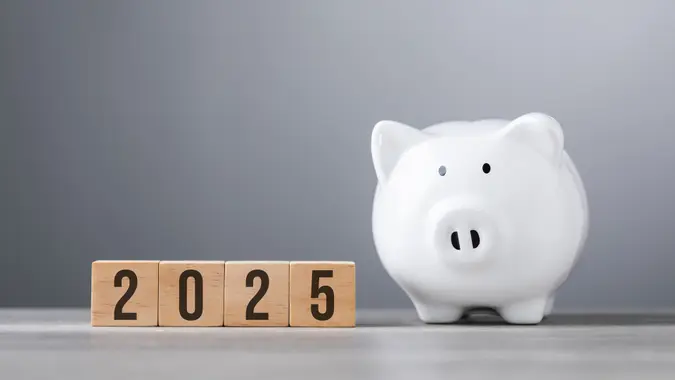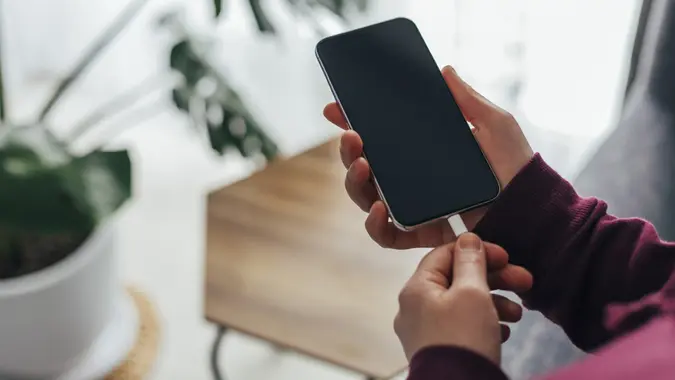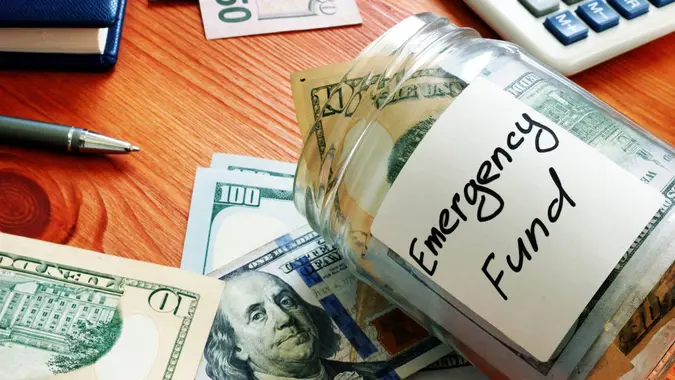How To Build an Emergency Fund Safety Net From Scratch in 2025

Commitment to Our Readers
GOBankingRates' editorial team is committed to bringing you unbiased reviews and information. We use data-driven methodologies to evaluate financial products and services - our reviews and ratings are not influenced by advertisers. You can read more about our editorial guidelines and our products and services review methodology.

20 Years
Helping You Live Richer

Reviewed
by Experts

Trusted by
Millions of Readers
Life is unexpected. You may go to work tomorrow and find out you’re getting a raise. That scratch-off lottery ticket you bought last week may now be worth $5,000. A distant relative you barely knew may leave you an inheritance.
More often than not, however, the opposite scenarios are true. You may have an expensive medical emergency. Your car may break down on the highway. You may get laid off without any prior notice. Such events can lead to huge financial burdens for which you may not be ready.
According to a GOBankingRates survey, 37% of Americans don’t have anything saved up in case of an emergency. Building up an emergency fund is one way to prepare for such unexpected expenses.
Experts agree that your emergency fund should be able to cover at least three to six months of your living expenses. Here’s a quick guide on how you can start saving from scratch.
Get Started Now
If you don’t have any money saved, you need to start today.
Many people set financial goals for themselves without taking any next steps toward saving for emergencies. Considering the numerous upcoming expenses right now, they believe they can safely start saving sometime down the line.
Graham Stephan, a finance YouTuber and real estate agent, brings this up as an an often-overlooked but important point. He said, “Whatever the reason, you’re only hurting yourself by not beginning immediately.”
Once you have a financial plan, you can ride the momentum and start right away .
Develop a Paycheck Routine
If you have a regular job, you can build an emergency fund by putting a percentage of your income away every month. Ramit Sethi, a New York Times bestselling author and finance YouTuber, recommends automating your paycheck routine to do so.
If your company sends your paychecks to your bank account, Sethi suggests you add this simple step. First, decide on how much money you want to add to your emergency fund each month. Then, set up an automated transfer to send that amount to a designated savings account the day after payday.
You can also take this advice further to maintain your retirement funds or investment accounts or even to pay off your debts. The best part is that with an automated paycheck routine, your emergency fund will start to build itself.
Track Your Spending
Once you have automated your savings, you can use the remaining money to cover your monthly expenses. However, it’s important to track your spending so that you know where your money is actually going. It will also give you a perspective on the avenues where you could be spending less, like monthly subscription services you don’t need anymore.
Dave Ramsey, founder of Ramsey Solutions, breaks down how to track your expenses. First, create a list of all of your fixed monthly expenses, like rent and car payments. Next, document exactly where that money goes over a month. You can do this with a pen and paper, a spreadsheet or a budgeting app — any method that works best for you.
With one full month of information, you’ll be able to see where you’re overspending and find opportunities to save. But don’t stop there — continue to track your spending over time. As you cut back more and more, you’ll have even more to put into your emergency fund.
Make Sacrifices
Meeting your financial goals and building an emergency fund won’t always be easy. It’ll take determination and sacrifice.
Jaspreet Singh, a personal finance expert and the host of the Minority Mindset Show, doesn’t mince words about the topic. He says that if you really want to turn your finances around, you need to get serious and make sacrifices when necessary. This could be not going on vacation or driving your old car for longer. Whatever the sacrifice, the funds you save should be added to your emergency fund.
 Written by
Written by  Edited by
Edited by 

























